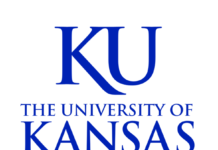Possessing bird feathers could get a person cooped up in prison.
The possession of feathers and other parts of native North American birds without a permit is banned by the Migratory Bird Treaty Act of 1918, says the website of the U..S. Fish & Wildlife Service.
That act “protects wild birds by preventing their killing by collectors and the commercial trade in their feathers, and extends to all feathers, regardless of how they were obtained,” that site adds. “There is no exemption for molted feathers or those taken from road- or window-killed birds.”
What are the penalties?
For each unauthorized take of a protected bird or one of its parts, a violator of the MTBA may be subject to penalties of a fine of up to $15,000, imprisonment for up to six months, or both.
“Obviously, the law is not intended to prosecute kids for keeping a Blue Jay ( Cyanocitta cristata ) feather found in their yard, although it is technically illegal to do so,” says the website of the Atlanta-based Fernbank Science Center .
The Fish & Wildlife Service is permitted to use discretion in enforcing the act, meaning it may choose not to prosecute apparent technical violations.
How did the act come about?
The MBTA, which took effect in 1918, implements international conservation treaties the U.S. reached in 1916 with Canada, in 1936 with Mexico, in 1972 with Japan and in 1976 with Russia, according to the Fish & Wildlife Service .
The act was initially targeted at protecting birds at a time when some species were being hunted nearly to extinction to satisfy the demand for big, wide women’s hats adorned with exotic bird plumes.
The act includes bans on possessing “feathers in your yard, a dead bird on the road or even a bird nest on your front porch,” the Fernbank Center website says.
“The law was made very strict, with few or no loopholes, so that ‘plume hunters’ as they were called at the time, could not simply say, ‘I found these feathers’ or, ‘The bird was already dead,'” it says. “Such proclamations would not matter since it is illegal to possess or sell any part of a bird, no matter how it was obtained. The strictness of the law gave it some teeth when it came time to prosecute offenders.”
The MTBA outlived the popularity of feathered hats
Feathered hats eventually went of style, due largely to the MBTA, the Fernbank Center website said.
“Unfortunately, the MBTA is still quite relevant today as wildlife officials deal with the overwhelming problem of illegal trade of wild birds and other animals,” it said.
The MBTA has been interpreted to cover any bird that can be proven to naturally occur in the United States or its territories, according to the Fernbank Center website .
“Several conventions and amendments to the original Act have been added over the years and with the Migratory Bird Treaty Reform Act of 2004 all species native to the United States or its territories, which are those that occur as a result of natural biological or ecological processes were added to the official list of protected species,” it said.
Which native species are protected?
The Fish & Wildlife Service website offer a list of birds for which the MTBA bans the public from possessing their feathers without authorization.
Species on that list include cuckoos, loons, falcons, woodpeckers and perching birds , which are the most common order.
Legally hunted waterfowl that include species of geese and swans are among species on the government’s list of birds to which the act does not apply .
The feathers possession ban also doesn’t extend to non-native birds such as peacocks .
Possessing feathers shed by a peacock is legal, though killing peacocks for their feathers is not.
What other exceptions are there?
The government also allows exceptions to the MTBA for the authorized use of feathers by Native Americans.
Registered members of federally recognized tribes may possess the feathers of native birds for cultural and religious use, the Fish & Wildlife Service website says.
Such feathers may not be sold or traded, it adds.
“People or institutions wishing to use bird feathers, bones, or whole specimens for educational or research purposes must apply for permits from the U.S. Fish and Wildlife Service and their state wildlife or natural resource agency,” the Fish & Wildlife Service website says .
Lacey Act was violated in 2009 in Lawrence
The MBTA’s enactment came 18 years after the passage in 1900 of the Lacey Act, which makes it illegal to transport or sell a bird in one state that was illegally hunted in another.
Federal officials said an Oklahoma man violated the Lacey Act in 2009 when he tried to sell an undercover Fish and Wildlife Service agent parts of a bald eagle, a gold eagle and a crested caracara, as well as a Native American dance bustle containing hawk feathers.
The man was sentenced in 2013 in Wichita to a year on federal probation
Feathers seized in the case were sent to the Fish and Wildlife Service’s National Eagle Repository in Colorado, which provides eagle feathers to Native Americans for use in Indian religious and cultural ceremonies..
How is the MTBA ban worded?
The MBTA specifically says that the public, unless permitted by regulations, may not “pursue, hunt, take, capture, kill, attempt to take, capture or kill, possess, offer for sale, sell, offer to purchase, purchase, deliver for shipment, ship, cause to be shipped, deliver for transportation, transport, cause to be transported, carry, or cause to be carried by any means whatever, receive for shipment, transportation or carriage, or export, at any time, or in any manner, any migratory bird or any part, nest, or egg of any such bird.”
As reported in the Topeka Capital Journal



